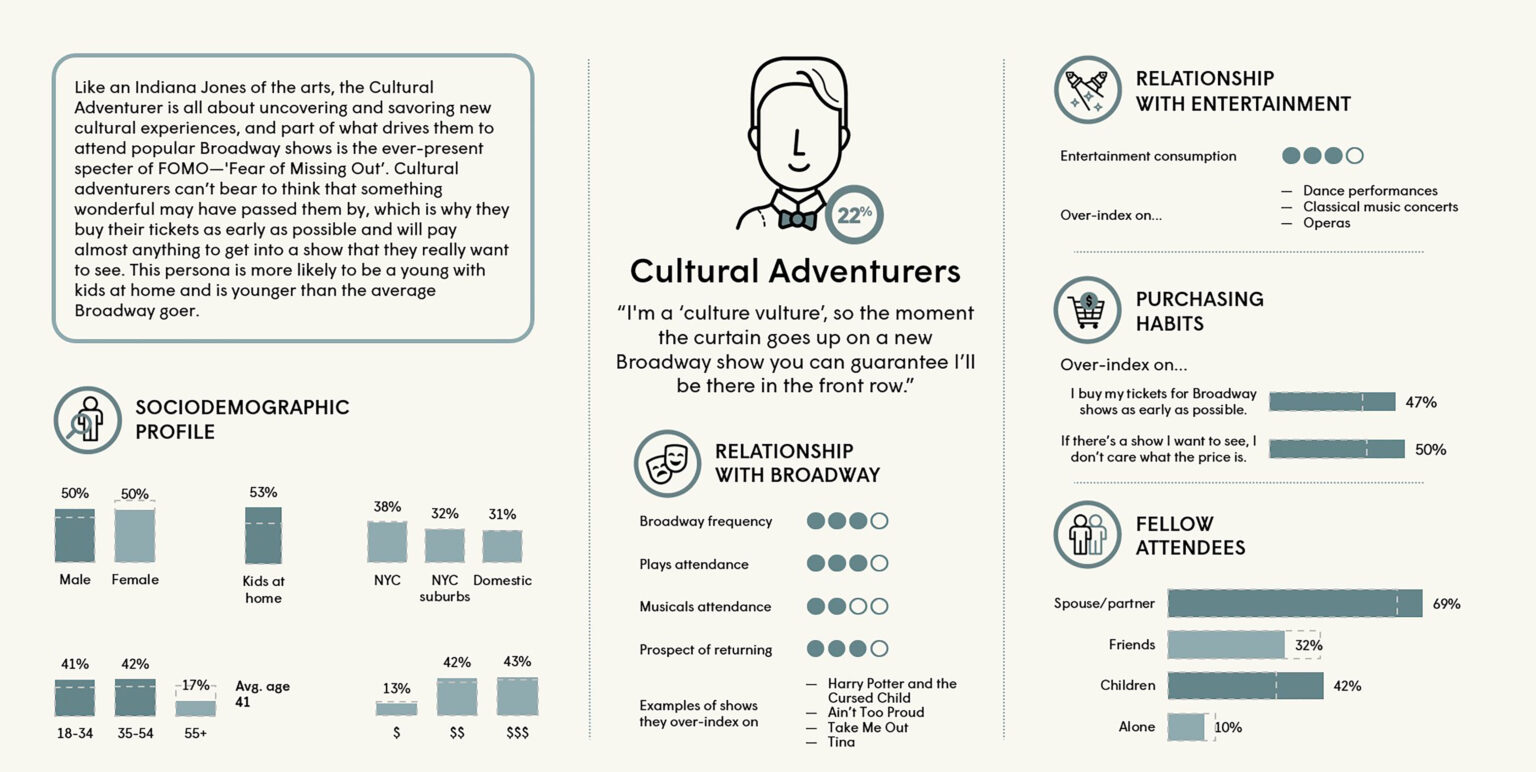Deepening audience understanding:
From segmentation to personas

Understanding one’s audience now goes beyond general data analysis or intuition. In the entertainment, sports, tourism, and experiential sectors—where expectations and behaviors are highly diverse—a structured understanding of audience dynamics is a powerful tool. It enables the design of relevant offers, guides marketing communications based on motivators and perceived intangible value, and ensures efficient allocation of marketing investments toward the right channels.
In this context, two complementary approaches deserve to be distinguished: segmentation and personas. While they rely on similar foundations, their role, purpose, and place in the strategic process differ.
What sets them apart—and when should each be used?
Segmenting to structure the analysis
Segmentation involves grouping individuals who share common sociodemographic profiles and analyzing their purchasing behavior, preferences, and other shared characteristics. This helps structure market understanding, assess potential, identify priority segments, and guide development decisions.
Used early in the process, segmentation provides a robust analytical framework to build product development strategies and targeted marketing campaigns in terms of both messaging and channel selection.
A segmentation exercise can be carried out by analyzing existing buyer data and conducting a quantitative study to explore the profiles and behaviors of interested individuals. A qualitative study, conducted subsequently, can help refine segmentation and add greater nuance to how behaviors and consideration of the offer are understood.
Building personas to refine activation
The persona development approach complements segmentation. It offers a more nuanced view by creating clear portraits of current and target buyers. This process integrates specific characteristics, behaviors, motivations, barriers, and expectations. It is particularly valuable when it comes to personalizing marketing messages, designing tailored experiences for participants, or diversifying complementary offers.
To be scientifically validated, personas should be based on behavioral quantitative research and further enriched through qualitative methods to achieve greater depth and accuracy.
Case study: Understanding Broadway audiences
In a study conducted by Habo, over 1,000 U.S. musical theater consumer participants were surveyed to analyze their profiles and behaviors. The persona analysis was built from data including sociodemographic profiles, attendance habits, and preferences.
Based on this detailed analysis, six personas were confirmed—including The Cultural Adventurers and The Broadway Traditionalists. These profiles include additional qualitative dimensions, such as motivations, preferences, and decision-making drivers, providing a more human and actionable view of the audience. They help translate data into concrete guidance for marketing, programming, or product development teams.

Practical applications for organizations
The profiles developed through this study serve as a structuring tool for organizations looking to sharpen their understanding of their audiences. Specifically, they enable organizations to:
— Develop and refine a product;
— Optimize complementary product offerings (e.g., premium experiences, food and beverage, merchandising);
— Target marketing campaigns more precisely;
— Tailor messaging and communication channels to match audience expectations;
— Guide investment decisions based on behavioral priorities;
— Increase the relevance of offers and overall commercial performance.
Segmentation and personas are not opposing methods—they are part of the same strategic logic aimed at deepening audience understanding at different levels of analysis. When used together, they align strategic decisions with real market behaviors, enabling more coherent, targeted, and potentially higher-performing actions.
In a context where resources are limited, Habo recommends segmentation as a foundation, validated through quantitative research. While the persona approach offers a more refined and detailed understanding, executing strategies based on personas often requires more advanced tools and greater resources to maximize return on investment.